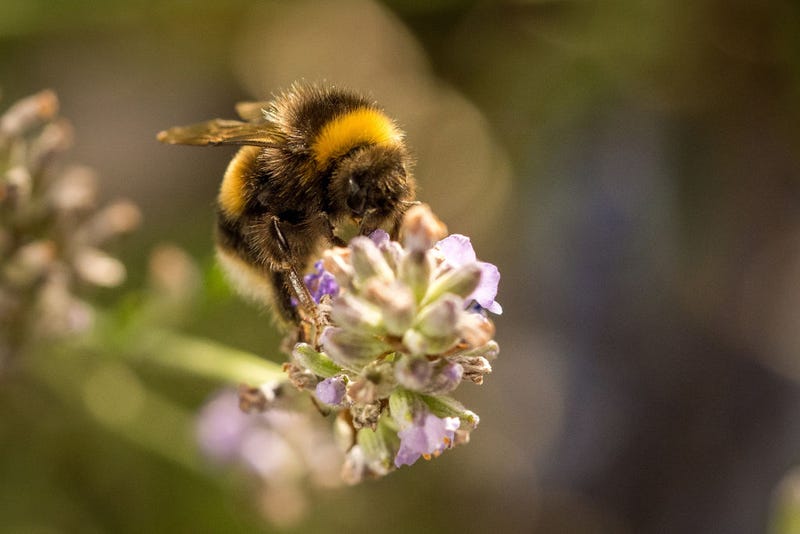
Which has more electricity, a swarm of bees or a thunderstorm?
The answer may be shocking.
A study, published on Monday by scientists at the University of Bristol in the U.K., found that honeybee swarms directly contribute to atmospheric electricity. These swarms can produce charges of as much as 1,000 volts per meter – roughly the same as a thunderstorm.
Sam England, a PhD student at the University of Bristol and one of the authors of the study, said they made the discovery in what was a "happy accident, which some of the most exciting science often is."
"In our lab we're really interested in insects, we keep a lot of honey bee hives. But we're also interested in the way that insects might use naturally occurring electricity like those found in thunderstorms during their natural light," he told KCBS Radio’s Eric Thomas and Melissa Culross on Wednesday morning. "So we're often taking background measurements of the background electricity. It just so happened that one of our honey bee hives decided to swarm which happens when the queen decides to leave the hive and set up a new one. We happened to capture this massive spike on our electric steel sensors, so that told us there might be something really interesting going on there."
As a result, the team set up a camera and electric field monitors to observe the next time the bees swarmed, and found that, if the swarm is dense enough, the atmospheric charge resembled that of a thunderstorm cloud.
England noted that the amount of electricity produced depends one what type of insect swarm it is. While honeybee hives create similar electric levels as a thunderstorm, researchers theorized that some insects, like locust swarms, can exceed that level of charge, and act over a much greater distance.
He said they can use this information to set up electric sensors that track locust swarms or other dangerous insects that have the potential to cause large agricultural damage.
The scientists still aren’t sure exactly how the bees are able to generate these charges.
"What we do know is that the bees do use these electric charges for some things," England explained. "So for example, when a bee approaches a flower, the electrostatic charge on the bee actually allows pollen to transfer from the flower onto the bee without any contact even being made at all. And we also think that they might be sensing the electrostatic field of flowers for example and it's important for them themselves to be charged… But in terms of the swarming we really don’t know, it's probably largely a consequence of the fact that there’s just such a huge density of these bees that are all carrying quite smaller electric charges but that adds up when you have that big swarm with many thousands of insects in it."
LISTEN on the Audacy App
Sign up and follow Audacy
Facebook | Twitter | Instagram

